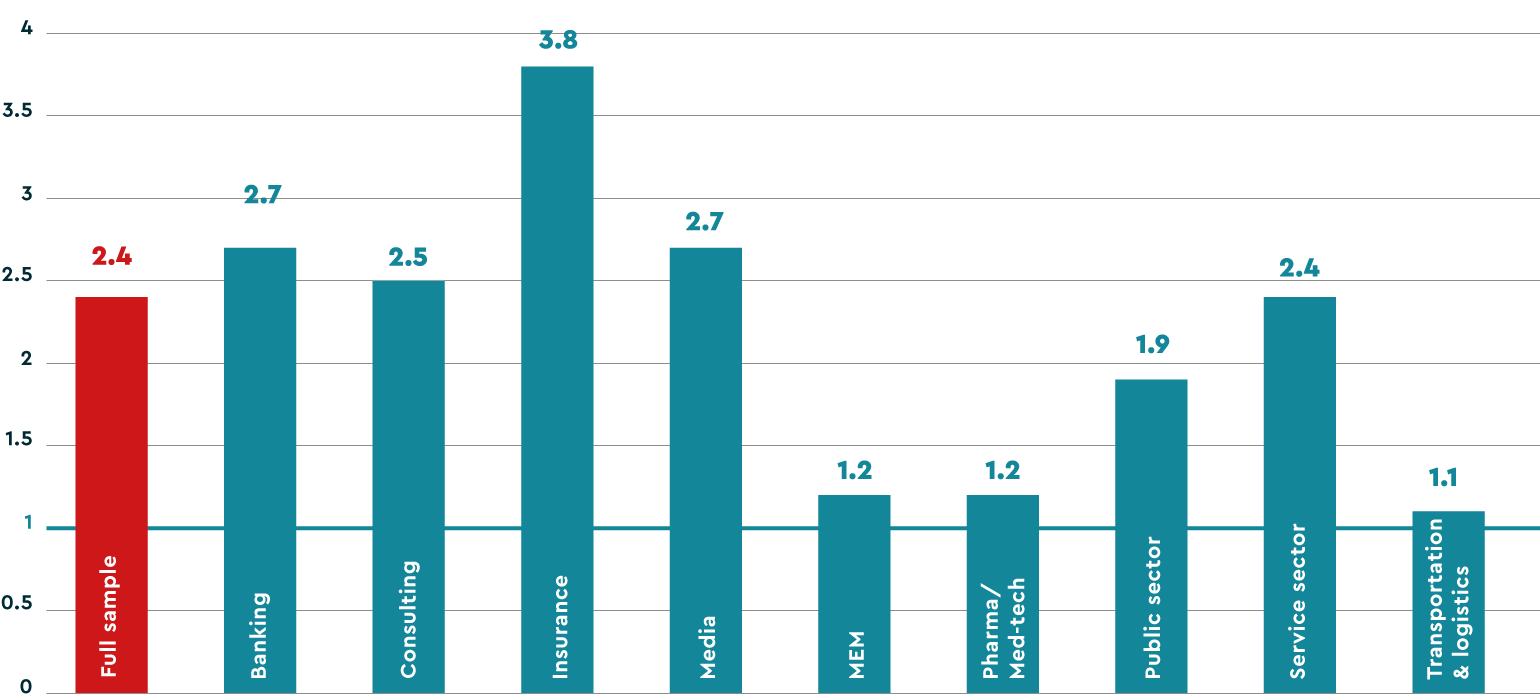Starting at 28 percentage points female representation in non-management, the distribution of women decreases until the lower management and then sees a slight improvement. In fact, the share of women in top management is only slightly lower than the share of women in non-management. This indicates that women do not face significant hurdles to reach leadership positions, especially compared to other industries.
It is important to note that across all management levels, women do not exceed the critical mass of 30%. This means that female employees are a minority and are unlikely to be able to affect cultural change.
Compared to the share of women in non-management, lowest/lower management promotions do not utilize the female talent pipeline fully. Hires are a little better. However, the opposite can be said about the middle and top management levels, where Transortation & Logistics companies make very good use of their female talent pipeline: The share of women among middle/top management promotions and new hires is considerably higher than the current share of women in lowest/lower management.

With a GCI of 1.1, the Transportation & Logistics industry shows that the women currently employed in this field face few hurdles in advancing their careers. The Transportation & Logistics industry has the lowest GCI of any GIR industry. However, one should also be aware that the share of women is very low overall in this industry.

Women have considerably lower employment percentages in non-management than in upper management positions. The Transportation & Logistics industry shows that to achieve the top management level, women must “make up” 18 percentage points of their employment percentage if they work part-time. This finding indicates that part-time work becomes less and less possible as women’s careers progress. Particularly, larger increases in employment percentage can be identified between non-management and lowest management, as well as between middle and top management.